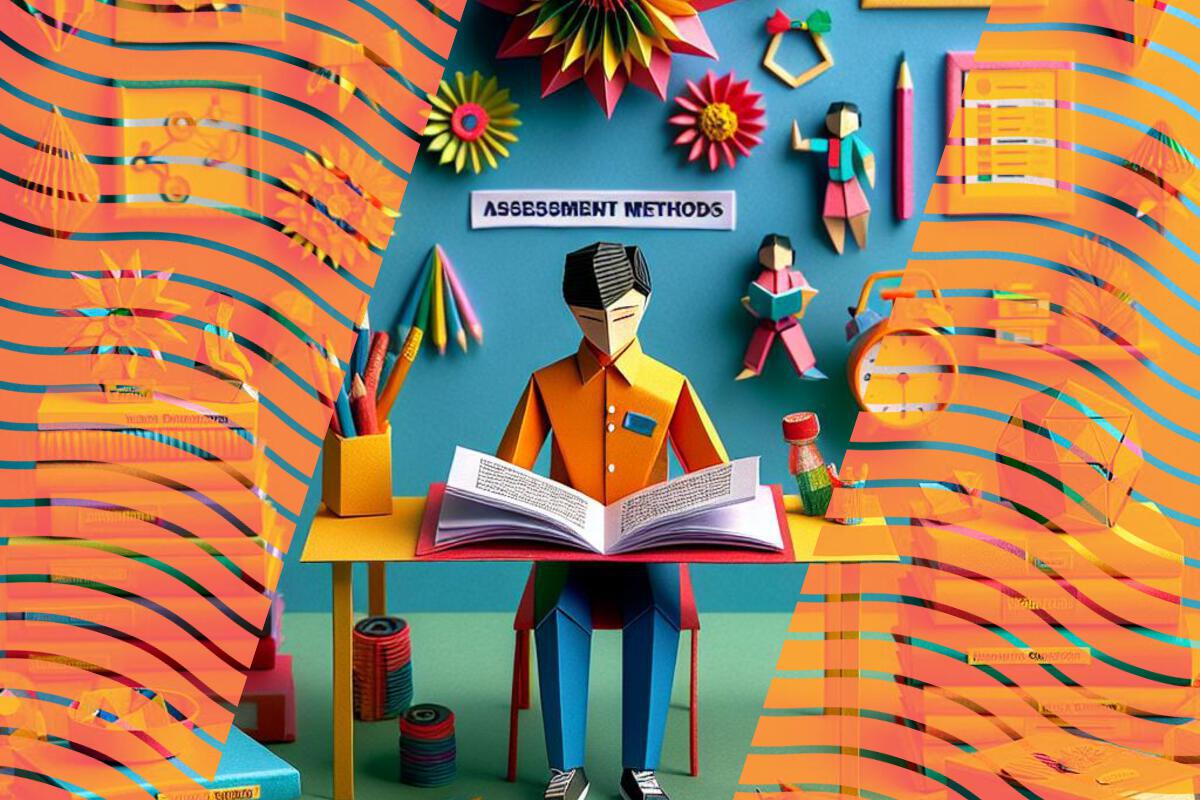What are students actually saying about Assessment methods (NSS 2018–2025)?
Students’ comments on how they are assessed lean clearly negative overall. Mature and part-time students are more critical than their peers, and tone varies noticeably by subject area, with some STEM disciplines among the most negative.
Scope: UK NSS open-text comments tagged to Assessment methods across academic years 2018–2025.
Volume: 11,318 comments (≈2.9% of all NSS comments); 100.0% scored for sentiment.
Overall mood: 28.0% Positive, 66.2% Negative, 5.8% Neutral (positive:negative ≈ 0.42:1).
Sentiment index: −18.8 (−100 to +100, where negative values mean more negative than positive).
What students are saying in this category
- The tone is consistently critical (−18.8), with over two in three sentiment-bearing sentences negative. This pattern holds across most segments.
- Mature students (−23.9) and part-time learners (−24.6) are notably more negative than young (−17.4) and full-time students (−17.4).
- Disabled students are more negative (−22.1) than those not disabled (−18.2).
- Not UK domiciled students are markedly more negative (−25.1) than White students (−17.5).
- Subject differences are material. Among higher-volume areas, Computing (−24.5), Engineering (−25.5), and Medicine & Dentistry (−28.0) stand out as more negative; Geography/Earth/Environmental studies (−6.5) and Media/Journalism/Communications (−3.3) are less negative. Mathematical Sciences (−31.7) is a notable low point.
Benchmarks across segments
Top subject groups by volume (CAH1)
| Subject group (CAH1) | n | Share % | Sentiment idx |
|---|---|---|---|
| (CAH15) social sciences | 1,043 | 9.2 | −18.7 |
| (CAH02) subjects allied to medicine | 975 | 8.6 | −18.1 |
| (CAH17) business and management | 903 | 8.0 | −13.8 |
| (CAH04) psychology | 796 | 7.0 | −19.9 |
| (CAH03) biological and sport sciences | 644 | 5.7 | −13.0 |
| (CAH11) computing | 591 | 5.2 | −24.5 |
| (CAH10) engineering and technology | 578 | 5.1 | −25.5 |
| (CAH01) medicine and dentistry | 504 | 4.5 | −28.0 |
| (CAH16) law | 494 | 4.4 | −14.6 |
| (CAH20) historical, philosophical and religious studies | 407 | 3.6 | −15.4 |
Key demographic contrasts
| Segment | n | Positive % | Negative % | Sentiment idx |
|---|---|---|---|---|
| Age: Young | 8,617 | 29.0 | 64.9 | −17.4 |
| Age: Mature | 2,494 | 23.5 | 71.3 | −23.9 |
| Mode: Full-time | 8,892 | 29.0 | 64.9 | −17.4 |
| Mode: Part-time | 2,133 | 23.3 | 72.0 | −24.6 |
| Disability: Not disabled | 9,144 | 28.1 | 65.8 | −18.2 |
| Disability: Disabled | 1,969 | 26.3 | 68.8 | −22.1 |
| Ethnicity: White | 7,308 | 29.1 | 65.7 | −17.5 |
| Ethnicity: Not UK domiciled | 1,166 | 22.2 | 72.0 | −25.1 |
| Ethnicity: Asian | 1,302 | 25.7 | 65.7 | −20.8 |
| Ethnicity: Black | 419 | 29.8 | 61.8 | −15.5 |
| Sex: Female | 6,445 | 28.5 | 65.8 | −18.1 |
| Sex: Male | 4,654 | 26.8 | 67.1 | −19.9 |
Notes: Very small cells (e.g., n < 100) should be treated with caution.
What this means in practice
With the category skewing negative across the board—and especially for mature, part-time, disabled and not UK domiciled students—prioritise clarity, parity and flexibility in how assessments are designed and communicated.
- Make the method unambiguous
- Publish a one-page “assessment method brief” per task: purpose, how it will be marked, weighting, allowed resources, and common pitfalls.
- Use checklist-style rubrics with clearly separated criteria and grade descriptors.
- Calibrate for consistency
- Run quick marker calibration using 2–3 anonymised exemplars at grade boundaries; record moderation notes.
- For larger cohorts, sample double-marking with targeted spot checks where variance is highest.
- Reduce friction for diverse cohorts
- For mature/part-time learners, offer predictable submission windows, early release of briefs, and asynchronous alternatives for oral components.
- For not UK domiciled students, provide short orientation on assessment formats, academic integrity, and referencing conventions with mini-practice tasks.
- Build accessibility in from the start: alternative formats, captioned/oral options, and plain-language instructions.
- Coordinate at programme level
- Publish a single assessment calendar to avoid deadline pile-ups and method clashes across modules.
- Avoid duplication of methods within the same term; aim for a balanced mix aligned to learning outcomes.
- Close the loop
- Provide a brief post-assessment debrief summarising common strengths and issues (even before individual marks) to improve perceived fairness and transparency.
How Student Voice Analytics helps you
- Cuts your data by discipline (CAH), demographics (age, mode, domicile/ethnicity, disability), and cohort/site to pinpoint where assessment method issues concentrate.
- Tracks sentiment for this category over time and surfaces concise, anonymised summaries you can share with programme and module teams.
- Supports like-for-like comparisons by subject mix and cohort profile, with export-ready tables for boards and quality reviews.
Data at a glance (2018–2025)
- Volume: 11,318 comments tagged to Assessment methods; 100.0% sentiment coverage.
- Overall mood: 28.0% Positive, 66.2% Negative, 5.8% Neutral (index −18.8).
- Largest segments by volume: Young (76.1%), Full-time (78.6%), White (64.6%).
Subject specific insights on "assessment methods"
assessment methods + (CAH19-01-03) literature in English
Are assessment methods holding back literature in English students?
An insight into literature in English students' experiences with assessments, uncovering challenges and desired improvements.
assessment methods + (CAH17-01-04) management studies
Do current assessment methods in management studies work for students?
An exploration of how diverse assessment methods in management studies influence student experiences and success.
assessment methods + (CAH02-04-01) nursing (non-specific)
How should UK providers assess nursing students?
Explore key challenges and opportunities in UK nursing education.
assessment methods + (CAH26-01-04) environmental sciences
What do environmental science students want from assessment?
Learn how environmental science students perceive and handle different assessment types, straight from their perspectives.
assessment methods + (CAH17-01-02) business studies
Do business studies assessment methods work for students?
Learn how different assessment methods affect business studies students, focusing on their needs and future preparation.
assessment methods + (CAH17-01-05) human resource management
Student perspectives on human resource management assessment methods
Learn from students’ honest feedback on HRM assessment methods in universities, cutting through coursework, exams, and group projects.
assessment methods + (CAH19-01-01) English studies (non-specific)
Should English studies change how it assesses students?
Understand how different assessment methods in English studies impact UK university students and staff. A straightforward look at practical implications.
assessment methods + (CAH02-06-07) counselling, psychotherapy and occupational therapy
What assessment methods work in therapy education?
Learn about various assessment methods in counseling, psychotherapy, and occupational therapy education that boost learning and skills.
assessment methods + (CAH10-01-04) aeronautical and aerospace engineering
Are current aeronautical and aerospace engineering assessments working for students?
Learn about student views on assessment methods in aeronautical and aerospace engineering. Find out how they impact learning and career preparation.
assessment methods + (CAH02-05-01) medical technology
Do medical technology students find assessment methods fit for purpose?
Learn about the opinions of medical technology students on assessment methods and how these impact their education and future careers.
assessment methods + (CAH10-01-08) electrical and electronic engineering
Are assessment methods working for electrical and electronic engineering students?
Learn how electrical engineering students view different assessment methods and their effects on learning and satisfaction.
assessment methods + (CAH01-01-02) medicine (non-specific)
Are current assessment methods helping medical students learn?
Learn about the challenges in assessing medical students, such as exam pressures and integrity issues, and how these affect their education.
assessment methods + (CAH04-01-01) psychology (non-specific)
Are psychology assessments working for students?
Learn about the ongoing issues and improvements in psychology assessments within higher education and how they impact student performance.
assessment methods + (CAH11-01-01) computer science
Do current assessment methods meet computer science students’ needs?
Insight into computer science students' views on assessment methods and their effects.
assessment methods + (CAH02-04-02) adult nursing
Are current assessment methods working for adult nursing students?
A detailed look at how assessment methods affect adult nursing students.
assessment methods + (CAH02-05-03) biomedical sciences (non-specific)
Are biomedical science assessments working for students?
An analysis of the challenges and opportunities in biomedical science assessments within UK higher education.
assessment methods + (CAH09-01-01) mathematics
Are mathematics assessment methods working for students?
A deep dive into how mathematics students view different assessment methods.
assessment methods + (CAH22-01-02) teacher training
Are assessment methods working for teacher training students?
Explore students' views on assessment methods in teacher training.
assessment methods + (CAH10-01-02) mechanical engineering
How do mechanical engineering students view assessment methods?
A look at mechanical engineering students' views on diverse assessment methods.
assessment methods + (CAH03-02-01) sport and exercise sciences
What do Sport and Exercise Sciences students say about assessment methods?
Exploring students' opinions on assessment methods in Sport and Exercise Sciences.
assessment methods + (CAH02-06-01) health sciences (non-specific)
Which assessment methods work in health sciences?
Overview of diverse assessment methods in health sciences education.
assessment methods + (CAH03-01-03) ecology and environmental biology
Do ecology and environmental biology students prefer practical assessment?
Exploring student perspectives on assessment methods in ecology and environmental biology.
assessment methods + (CAH15-01-02) sociology
What do UK sociology students say about assessment methods?
Explore UK sociology students' thoughts on assessment methods.
assessment methods + (CAH17-01-03) marketing
What assessment methods do marketing students say work best?
An examination of marketing students' opinions on various assessment strategies.
assessment methods + (CAH17-01-01) business and management (non-specific)
What do business and management students say about assessment?
Examining the obstacles faced by business students in academic environments.
assessment methods + (CAH03-01-01) biosciences (non-specific)
Do assessment methods in biosciences education work for today’s students?
Explore the complexities and educational methods in biosciences, highlighting interdisciplinary approaches and practical applications.
assessment methods + (CAH10-01-07) civil engineering
Are civil engineering assessment methods working for students?
A detailed discussion on the effectiveness of civil engineering assessment methods.
assessment methods + (CAH03-01-08) molecular biology, biophysics and biochemistry
Are current assessment methods working for molecular biology, biophysics and biochemistry students?
A review of assessment methods in molecular biology, biophysics, and biochemistry.
assessment methods + (CAH02-02-03) pharmacy
How do UK pharmacy students view assessment methods?
Insights into how UK pharmacy students perceive various assessment methods in their education.





































